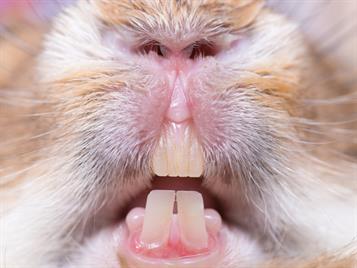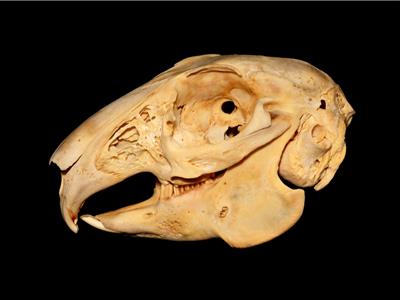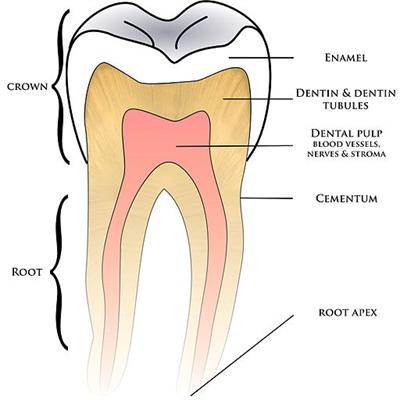PDF chapter test TRY NOW
The food content of the rabbit consists of a lot of fibres as they are eating the plants as their main food source. So it is very difficult for its digestive system to break down the food into nutrients. So rabbit has adaptations in its teeth that can break the fibres of the plant into small pieces of food before entering into its digestive system.

Rabbit teeth
The dentition of the rabbit is explained in this object.
Both jaws of the rabbit have teeth. These are located on the upper jaw's premaxillae and maxillae and the lower jaw's dentary bones. The jawbones have cup-like sockets where the teeth are located.
Teeth are bone-like structures that are utilised to cut, tear, and grind food. There are two sets of teeth on the rabbit.

Rabbit skull with dentition
The existence of two sets of teeth in an animal's life is referred to as diphyodont dentition. The young ones contain milk teeth, and the adult ones contain permanent teeth.
Important!
Note: The first set of teeth is known as milk-teeth, and they are deciduous when they are young. In adults, the milk teeth are replaced by the other permanent teeth, which do not need to be replaced.
The rabbit's teeth are all dissimilar in function, and they vary in their structures. Hence the dentition is referred to as heterodont (The word heteros derived from Greek, which means "different").

Dentition of rabbit (Arrangement of teeth in jaws)
In mammals, there are four types of teeth: incisors (I), canines (C), premolars (PM), and molars (M). All of these have a distinct shape, a specific location, and a specific function. Every mammal has a defined and fixed number of them.
- The upper jaw contains two long, chisel-shaped incisors, while the lower jaw only has one. It is mainly used to cut food. The large ridged crowns of the premolars and molars are used to ground the food.
- Molars emerge after the premolars. Three premolars and three molars are present in each half of the upper jaw, but only two premolars and three molars are found in the lower jaw.
In both jaws, canines are absent. Diastema refers to the space between the incisors and the premolars. In herbivorous animals, it helps in the mastication and chewing of food.
The dental formula is a simple way of representing a mammal's teeth. On one side, each type of tooth in the upper and lower jaws is counted. A dental formula can be used to indicate the number and arrangement of teeth.
Dental formula = Number of teeth in one half of the upper jaw/number of teeth in one half of the lower jaw. The dental formula of rabbit is follows as,
\(I\): \(2\)/\(1\)
\(C\): \(0\)/\(0\)
\(PM\): \(3\)/\(2\)
\(M\): \(3\)/\(3\)
So the rabbit dental formula is written as \(2033\)/ \(1023\).
Structure of teeth in the rabbit:
- Teeth are made up of both the epidermis and the dermis.
- The crown, neck, and root are the three parts of a typical tooth.
- The crown is the visible, shining area of the tooth that protrudes from the gum line.
- In the gums, the neck part is located below the crown.
- The root of the tooth is encased in a socket in the jawbones.
- Hard dentine makes up the bulk of the tooth.
- A pulp cavity is situated inside the tooth, containing connective tissue, blood vessels, and nerves.
- A layer of odontoblast or bone cells lines the pulp cavity.
- Dentine is a bony dermal substance. It has several fine canaliculi through which bone cell processes run.

General anatomy of teeth
Important!
The crown is covered by a layer of hard, shining enamel, while a layer of bone cement protects the roof. The gums also help to strengthen the adhesion of teeth to the jawbones.
Furthermore, there are two types of teeth: open rooted and closed rooted teeth.
The pulp cavity in rodents, lagomorphs, and elephants incisors are basally opened; therefore, these teeth constantly develop throughout their lives and are known as open rooted teeth. The basal aperture of the pulp cavity in close rooted teeth closes at a certain age, and hence stopping future growth.
Reference:
https://upload.wikimedia.org/wikipedia/commons/thumb/1/13/Basic_anatomy_tooth.jpg/512px-Basic_anatomy_tooth.jpg
